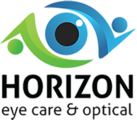
- Blog
- Importance Of Pediatric Eye Exams
Importance Of Pediatric Eye Exams
Published:
When was the last time your child attended an eye exam? Your child is just as reliant on their vision as you are, and it is your responsibility to ensure that your child attends regular pediatric eye exams so that a professional can closely monitor the health and condition of your child’s eyes. But why are pediatric eye exams so important?
Children’s Learning is Predominantly Visual
Experts estimate that as much as 80% of what a child learns in the first decade of their life is presented to them visually. This makes good vision and healthy eyes essential for your child’s growth and development at every stage of their early life. This is particularly true once your child starts school as vision problems can negatively affect a child’s performance in school long before parents become aware of the issue. In fact, many children are misdiagnosed with learning or behavior disorders when in fact, they are struggling to access their learning because of a problem with their vision.
Children risk not being able to fully participate in their education if they have visual problems. For example, they may not be able to see the board, keep up with reading or other work in class, and choose not to volunteer to read in class out of embarrassment. They may also act out in class and among their peers to distract others from their poor vision. Issues such as poor hand-eye coordination, difficulty with sports, etc may also set them apart from others, causing them to feel isolated. Healthy eyes and clear vision are crucial if your child is to fully engage with their education and fulfill their potential.
Clear Vision is Essential For Safety
We also need to use our eyes to keep us safe in many areas of our lives and our children are no different. We need clear, concise vision in order to be able to take visual cues from the world around us – such as traffic light colors, being able to anticipate the speed of approaching traffic, reading safety instructions, or taking the right dose of medication. Children start developing visual skills that enable them to make decisions and keep themselves safe from a young age.
Myopia is Becoming Increasingly Common in Children
Myopia is the most common refractive eye condition in the world and is characterized by the ability to see close objects clearly but being unable to see those at a distance because they appear out of focus and blurred. Also known as short or near-sightedness, myopia is caused by a problem with the way that light passes through the eyes, meaning that the message our brain receives from them is mixed. Fortunately, it can be corrected using various solutions including prescription glasses and contact lenses, as well as more permanent solutions like laser vision correction.
Myopia can occur at any age, but experts have noticed a significant increase in the number of children being diagnosed with the condition. There are many reasons for myopia, but more time spent indoors and using screens is thought to play a part in this upturn in cases. Not only will myopia make it necessary for your child to wear visual aids to see clearly, the condition is progressive which means that without treatment, but it will also get worse. High myopia has been linked to much more serious eye conditions that could develop in your child’s future, including macular degeneration, cataracts, and even retinal detachment. Therefore, it is essential that your child’s eyes are monitored carefully so that your eye doctor can help them to maintain long-term good vision and healthy eyes.
Signs That Your Child May Have an Eye Problem
Although bringing your child for regular pediatric eye exams are essential so that your eye doctor can monitor the condition and health of their eyes, it is still important to know some of the signs that they could be experiencing a problem with their vision. Many children may not realize that they have a vision problem, so without routine tests and a parent that understands the symptoms of a vision problem, there is a very real risk that the problem may not be spotted. As a result, your child’s development and education could be adversely affected.
Some of the signs of a possible eye problem in children include:
- Complaining of headaches or tired/painful eyes.
- Regularly rubbing their eyes.
- Eyes not pointing in the same direction.
- Problems with their reading, such as needing to hold their book close to their face or losing their place regularly. Their teacher may also assess them as being behind their peers.
- Difficulty with hand-eye coordination.
- Being unusually clumsy.
- Sitting too close to the tv or board in the classroom.
If your child experiences any of these symptoms, it is important that you arrange an appointment with your eye doctor promptly. For more information about pediatric eye exams, don’t hesitate to get in touch with our knowledgeable team in Sugar Land, TX.
